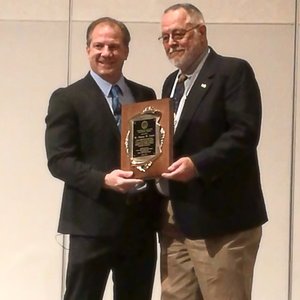With Vitalis PRIMA, Skretting has developed a new diet aimed at establishing higher levels of performance, biosecurity, sustainability and compatibility among marine broodstock and their young fry
Launching globally in the first-quarter of 2018, Skretting’s Vitalis PRIMA is a new marine broodstock diet that supports the health of parent fish and young fry, thereby improving the performance of hatchery systems globally. Vitalis PRIMA, which replaces Vitalis CAL, incorporates some of the latest technology to come from groundbreaking dietary research as well as invaluable commercial input from broodstock and hatchery managers. It is the latest solution to come from more than 25 years of health feed development at Skretting.
With Skretting Aquaculture Research Centre (ARC) partnering in high-level research investigations into different dietary elements such as protein levels and amino acids, Vitalis PRIMA began with the finding that establishing a balanced amino acid profile with seriola (amberjack) can lead to a significant improvement in yolk sac fry survival and robustness without detriment to other factors, such as the number of eggs produced or the level of hatching.
“This was a big step forward because a major problem that has long plagued seriola production is that hatcheries would get eggs, they would get fertilisation, the fry would hatch but then a lot of them wouldn’t transition on to first-feeding. This is simply because the yolk sac fry would not provide sufficient energy reserves,” explained Eamonn O’Brien, Product Manager for Skretting Marine Hatchery Feeds (MHF).
Skretting set about looking to utilize this information and incorporating it into trials and collaborative projects with other species, including turbot, cobia, seabass and seabream. At the same time, the breakthrough opened up discussions with many broodstock and hatchery managers about what additional attributes they would like to see in a marine broodstock diet.
As well as seeing increased fry survival through improved embryo vitality, hatcheries wanted diets that were much more compliant with the recirculation systems that they use, they also asked for the feed to be much more appealing to broodstock that can often stop feeding during the spawning window.
Skretting, meanwhile, wanted to support the appearance of marine broodstock by incorporating the same blend of marine algae ingredients used in all of its other broodstock diets. The algae plays many different roles, but particularly within broodstock it gives a naturally strong pigmentation to the fish. Bream, for example, develop the natural green tinge on the head and the red pigmentation around the gills and the stomach area.
Aligned with the algae content, Skretting also took the opportunity to increase the astaxanthin content of the feed. As well as supporting fish flesh pigmentation, astaxanthin is an antioxidant and a precursor to vitamin A.
Last but not least, through Skretting’s commitment to reducing pressure on marine raw materials, it has introduced a new marine algae capable of providing a viable and sustainable alternative to the finite supply of the traditional fish oil raw material traditionally used in broodstock diets.
“We wanted to reduce that dependency on fish oil. First of all, it allows us to improve our sustainability rating within the feed; at the same time, it gives Skretting a lot more stability in terms of formulation and nutritional quality,” said O’Brien.
In all, six new attributes have been included in Vitalis PRIMA, as well as closer alignment with Skretting’s other Vitalis diets: Vitalis Clean for lumpfish broodstock, Vitalis 2.5 for shrimp and Vitalis Repro which is offered to marine fish outside of the spawning window to maintain their optimal spawning condition.
Other elements, including the level of squid content in the formula, remain unchanged. The diet also remains fully compliant with Protec, Skretting’s leading health diet which supports fish and helps them cope with disease and recover faster following stress or injury.
“Vitalis PRIMA, together with Vitalis Repro, will provide a complete feeding program for broodstock fish and make a considerable contribution to Skretting’s standing as market leader in the field of broodstock nutrition. We are very excited about the long-term benefits that this will bring for farmers of marine species throughout the world,” Julio Docando-Valencia, Fish Health Diets Manager at Skretting South Europe said.











